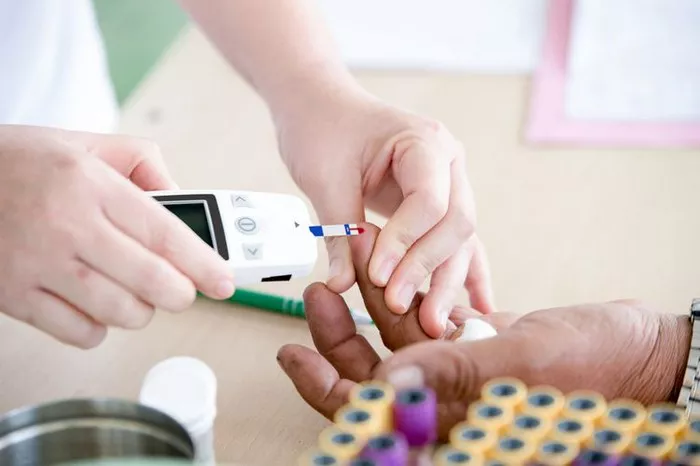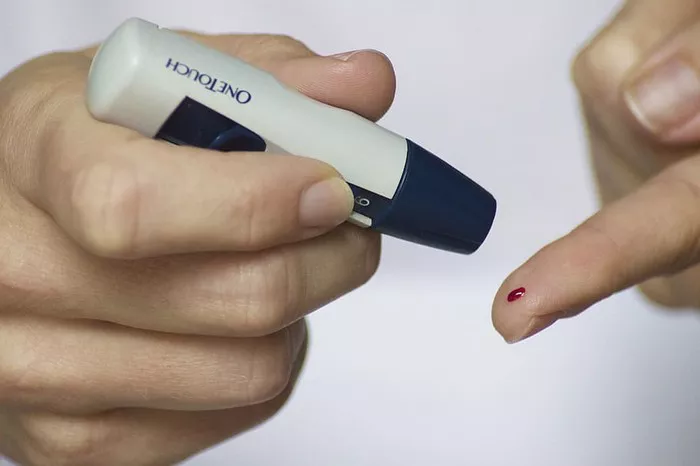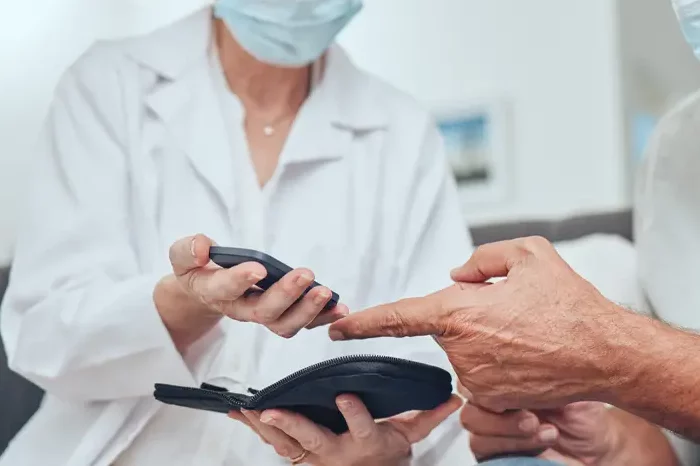Hyperglycemia, or high blood glucose, is a common complication in diabetes mellitus, particularly in individuals with poorly controlled diabetes. It is characterized by elevated levels of glucose in the bloodstream, typically above 180 mg/dL (10 mmol/L) after a meal or 130 mg/dL (7.2 mmol/L) in a fasting state. Chronic hyperglycemia is a major risk factor for the development of long-term complications such as cardiovascular disease, neuropathy, nephropathy, and retinopathy. Acute hyperglycemia, on the other hand, can lead to immediate, life-threatening conditions like diabetic ketoacidosis (DKA) and hyperosmolar hyperglycemic state (HHS).
Recognizing the Symptoms of Hyperglycemia
Early detection of hyperglycemia is crucial to prevent complications. Common symptoms include:
- Increased thirst and dry mouth
- Frequent urination
- Fatigue
- Blurred vision
- Unexplained weight loss
- Slow-healing wounds
- Recurrent infections, such as thrush or urinary tract infections
In more severe cases, especially in the context of DKA or HHS, symptoms may include:
- Nausea and vomiting
- Abdominal pain
- Shortness of breath
- Confusion or decreased consciousness
- Fruity-smelling breath (indicative of ketones)
Immediate Steps to Take When Hyperglycemia Occurs
Monitoring Blood Glucose Levels
The first step in managing hyperglycemia is to confirm the high blood glucose levels through self-monitoring of blood glucose (SMBG) using a glucometer. Continuous glucose monitors (CGMs) can also provide real-time glucose readings and trends.
Adjusting Insulin or Medications
Individuals with diabetes should have a personalized plan in place for adjusting insulin or other diabetes medications. This plan, typically developed with a healthcare provider, may include:
Rapid-acting insulin: For type 1 diabetes or type 2 diabetes patients using insulin, a correction dose of rapid-acting insulin can help bring down high blood glucose levels. The amount to administer should be based on the individual’s insulin sensitivity and the degree of hyperglycemia.
Oral medications: For those on oral hypoglycemic agents, a missed dose should be taken if not too late in the day. Consulting with a healthcare provider for potential dosage adjustments is recommended.
Hydration
Hyperglycemia can lead to dehydration due to increased urination. Drinking water or other non-caloric fluids can help manage dehydration and reduce glucose levels by diluting the bloodstream.
Physical Activity
Moderate exercise can help lower blood glucose levels by increasing insulin sensitivity. However, exercise should be approached with caution, especially if blood glucose levels are extremely high (over 250 mg/dL or 13.9 mmol/L) or if ketones are present in the urine. In such cases, exercise might exacerbate hyperglycemia or lead to DKA.
Ketone Testing
For individuals with type 1 diabetes or those on insulin therapy, testing for ketones is important when blood glucose levels exceed 250 mg/dL. Ketones are produced when the body breaks down fat for energy in the absence of sufficient insulin. High levels of ketones can indicate DKA, a medical emergency requiring immediate attention.
Long-Term Strategies for Hyperglycemia Management
Diet and Nutrition
A balanced diet plays a critical role in managing blood glucose levels. Key dietary recommendations include:
Carbohydrate counting: Understanding how different types of carbohydrates affect blood glucose levels and learning to count carbohydrate intake can help manage hyperglycemia.
Glycemic index: Choosing foods with a low glycemic index (GI) can prevent spikes in blood glucose levels. Low-GI foods are digested and absorbed more slowly, leading to a more gradual rise in blood glucose.
Balanced meals: Including a mix of carbohydrates, protein, and healthy fats in each meal can help maintain stable blood glucose levels.
Portion control: Eating appropriate portion sizes to avoid excessive calorie intake and weight gain.
Medication Adherence
Strict adherence to prescribed medication regimens is essential in preventing hyperglycemia. This includes taking medications at the right times and dosages as directed by a healthcare provider. Regular follow-ups and adjustments to treatment plans are necessary based on the patient’s blood glucose trends and lifestyle changes.
Regular Physical Activity
Incorporating regular physical activity into daily routines helps improve insulin sensitivity and lower blood glucose levels. The American Diabetes Association recommends at least 150 minutes of moderate-intensity aerobic exercise per week, spread over at least three days, with no more than two consecutive days without exercise. Strength training exercises are also beneficial and should be performed at least twice a week.
Weight Management
Maintaining a healthy weight is crucial for blood glucose control, especially for individuals with type 2 diabetes. Weight loss, even a modest amount, can significantly improve insulin sensitivity and reduce hyperglycemia. Strategies for weight management include:
Caloric intake reduction: Consuming fewer calories than expended to achieve weight loss.
Healthy eating habits: Adopting a diet rich in whole foods, fruits, vegetables, lean proteins, and healthy fats.
Regular physical activity: Combining aerobic and resistance exercises to enhance weight loss and improve overall health.
Stress Management
Stress can adversely affect blood glucose levels through the release of stress hormones like cortisol, which can increase glucose production in the liver. Effective stress management techniques include:
Mindfulness and meditation: Practices that promote relaxation and reduce stress.
Regular exercise: Physical activity helps reduce stress and improve mood.
Adequate sleep: Ensuring sufficient and quality sleep to maintain overall health and well-being.
Regular Monitoring and Follow-Up
Frequent blood glucose monitoring is essential for individuals with diabetes to understand their glucose patterns and make necessary adjustments. Regular follow-up appointments with healthcare providers ensure that treatment plans are effective and allow for timely interventions when needed.
Education and Support
Ongoing diabetes education empowers individuals to manage their condition effectively. Support groups and counseling services can provide additional assistance and motivation.
Emergency Situations: Diabetic Ketoacidosis and Hyperosmolar Hyperglycemic State
Diabetic Ketoacidosis (DKA)
DKA is a severe complication primarily seen in type 1 diabetes, although it can occur in type 2 diabetes under certain circumstances. It develops due to an absolute or relative deficiency of insulin, leading to increased ketone production and metabolic acidosis. Symptoms of DKA include:
- Severe hyperglycemia (blood glucose levels typically >250 mg/dL)
- High levels of ketones in the blood or urine
- Nausea and vomiting
- Abdominal pain
- Rapid, deep breathing (Kussmaul respirations)
- Fruity-scented breath
- Confusion or loss of consciousness
Management of DKA:
Hospitalization: DKA requires immediate medical attention and often hospitalization.
Intravenous fluids: Rehydration with IV fluids to correct dehydration and dilute blood glucose levels.
Insulin therapy: IV insulin to reduce blood glucose and stop ketone production.
Electrolyte replacement: Monitoring and correcting electrolyte imbalances, especially potassium.
Monitoring and support: Continuous monitoring of vital signs, blood glucose, ketones, and electrolytes.
Hyperosmolar Hyperglycemic State (HHS)
HHS is a serious complication more common in type 2 diabetes, characterized by extreme hyperglycemia and hyperosmolarity without significant ketosis. It typically develops over days to weeks and can be precipitated by infection, dehydration, or poor medication adherence. Symptoms include:
- Profound hyperglycemia (blood glucose levels typically >600 mg/dL)
- Severe dehydration
- Altered mental status, ranging from confusion to coma
- Absence or minimal ketones in the blood or urine
Management of HHS:
Hospitalization: Immediate medical care is essential.
Intravenous fluids: Aggressive rehydration to correct fluid deficit and decrease blood glucose concentration.
Insulin therapy: IV insulin to lower blood glucose levels.
Electrolyte management: Monitoring and correcting electrolyte imbalances, particularly potassium.
Monitoring and support: Continuous monitoring of vital signs, blood glucose, electrolytes, and overall condition.
Preventive Measures for Hyperglycemia
Routine Monitoring
Regular blood glucose monitoring helps detect hyperglycemia early and allows for prompt corrective actions. Both SMBG and CGMs provide valuable insights into glucose trends and variability.
Medication Compliance
Adhering to prescribed medication regimens is crucial for maintaining stable blood glucose levels. Patients should be educated about the importance of taking medications as directed and the potential consequences of non-compliance.
Dietary Management
A well-balanced diet tailored to individual needs and preferences can help prevent hyperglycemia. Carbohydrate counting, understanding the glycemic index, and practicing portion control are essential components of dietary management.
Regular Physical Activity
Consistent physical activity enhances insulin sensitivity and aids in maintaining healthy blood glucose levels. Both aerobic and resistance exercises should be incorporated into the routine.
Stress Reduction
Managing stress through relaxation techniques, exercise, and adequate sleep is vital for overall health and stable blood glucose levels.
Education and Support
Ongoing diabetes education and access to support groups or counseling services can provide individuals with the knowledge and motivation needed to manage their condition effectively.
Regular Medical Check-Ups
Frequent follow-up visits with healthcare providers ensure that treatment plans are effective and allow for timely adjustments based on changing needs and circumstances.
See also:Why Does Hyperglycemia Increase Heart Rate
Conclusion
Hyperglycemia is a significant concern for individuals with diabetes, requiring diligent management and timely interventions. By understanding the symptoms, immediate steps, long-term strategies, and preventive measures, individuals can effectively manage hyperglycemia and reduce the risk of complications. Collaboration with healthcare providers, regular monitoring, and lifestyle modifications are essential components of comprehensive diabetes care. With proper education, support, and adherence to treatment plans, individuals with diabetes can lead healthy and fulfilling lives while minimizing the impact of hyperglycemia.
Related topics:
Does Dehydration Cause Hyperglycemia
Does Stress Cause Hyperglycemia
What Is The Difference Between Type 1 And Type 2 Diabetes Hyperglycemia

























